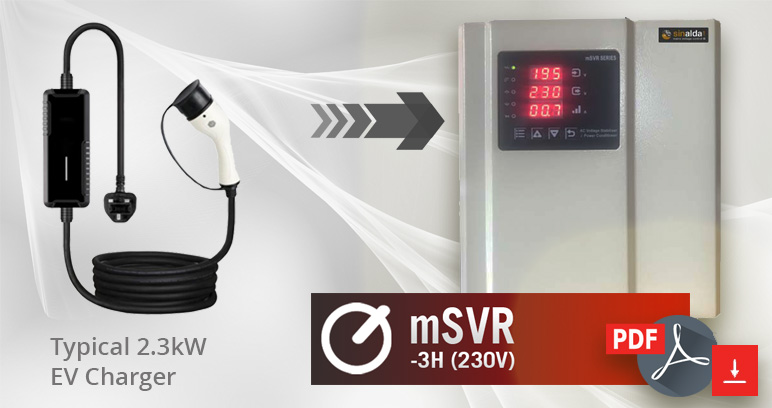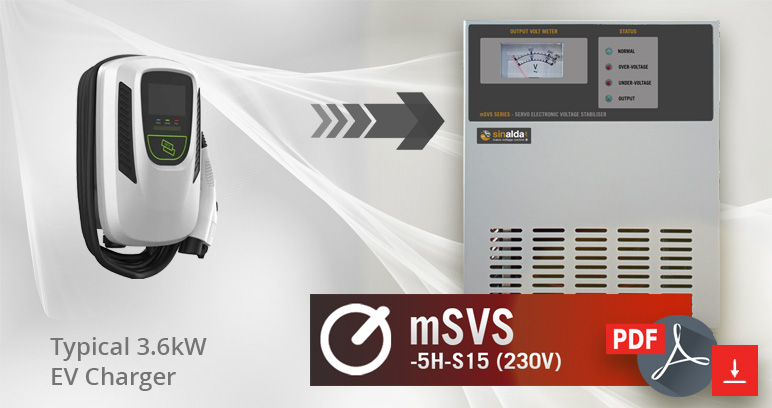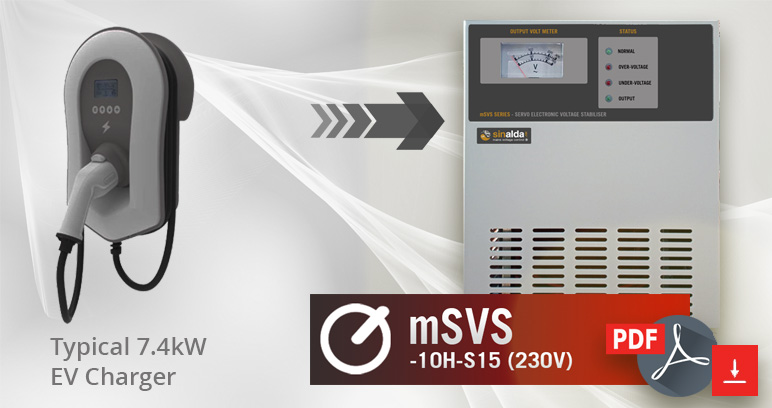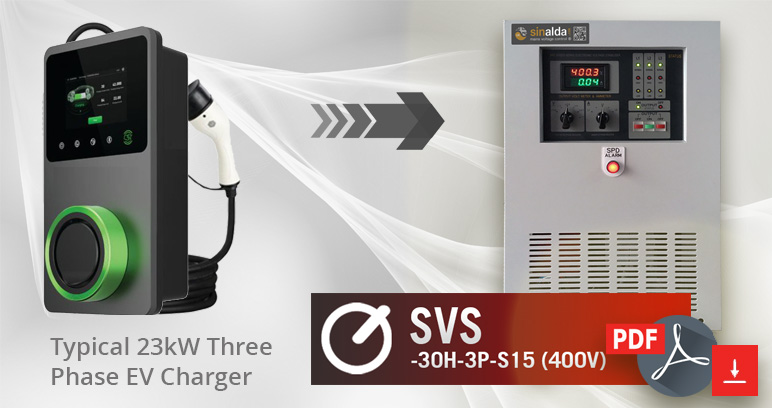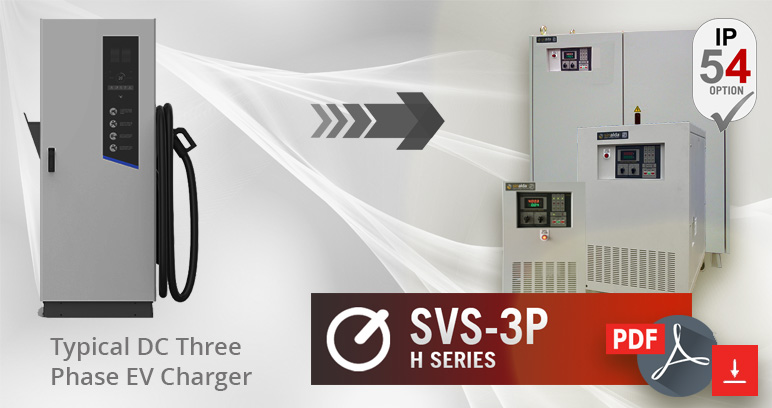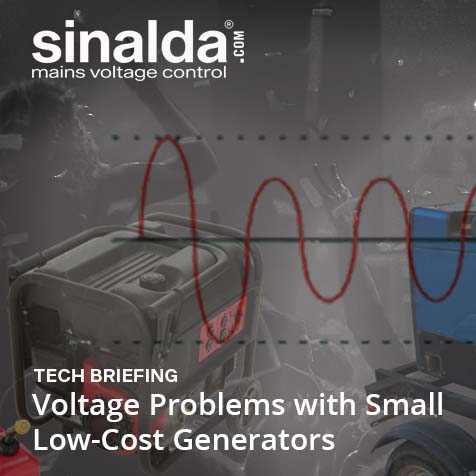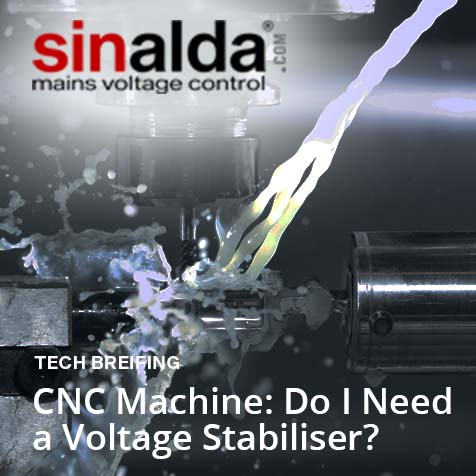High Voltage Charging Problems with EV Chargers
The official declared voltage and tolerance for an electricity supply in the UK is 400V/230V -6%, +10%. EV Charges are supposed to operate satisfactorily within an input voltage range of ±10%. So, in theory, an EV Charger should not have any problems working with a UK mains supply – or so you would have thought!!!
Most EV Chargers are designed such that if the incoming utility supply voltage goes outside the ±10% window, they shut down, protecting the Charger and connected EV battery from damage.
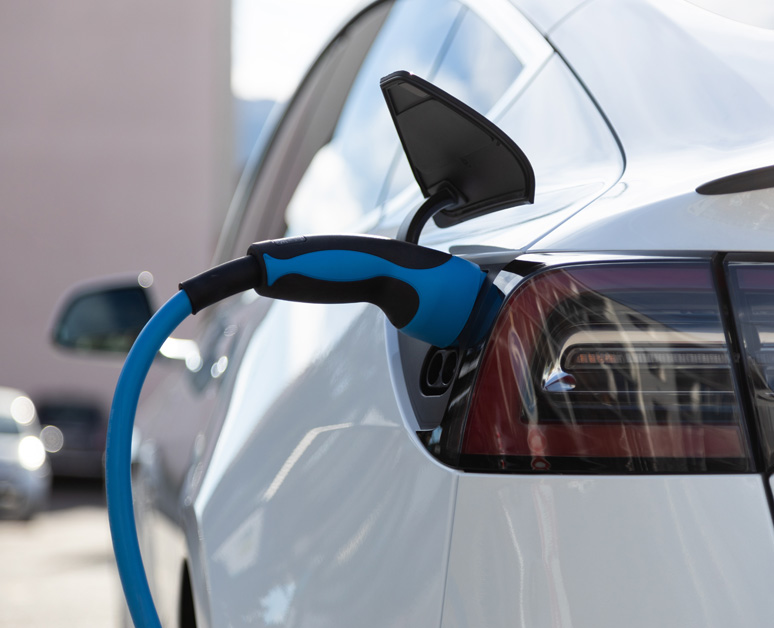
In practice, it’s not uncommon for mains supplies to exceed the +10% (Single Phase 253V) voltage limit; this can occur at night times when the loading on the supply network is reduced or because of the local DNO (Distribution Network Operator) tapping up the supply voltage at the sub-station to cope with increased demand in the area. Another possible cause of this overvoltage is the rising number of consumers with solar inverters forcing the supply voltage higher to enable back feeding into the grid. These issues tend to be most prevalent in rural or semi-rural areas, especially if the property where the EV chargers are installed has solar panels/inverters back feeding into the local supply network.
EV owners usually charge their vehicles at home overnight while asleep, so waking up to find their car has not charged because the Charger has cut out can be highly annoying.
Unfortunately, if you speak to your DNO about the overvoltage situation, they will often say that this is not an issue for them and refer you back to the EV Charger supplier. They, in turn, will say their Charger is doing exactly what it is designed and legally supposed to do. Being passed from “Pillar to Post” does not help find a solution to your problem! If the DNO eventually accepts there is an issue, corrective action to resolve the problem can take a long time – depending on how critical the DNO considers the problem to be.
However, fitting a Voltage Stabiliser between your Main Distribution Board and the EV Charger can immediately resolve the issue.
The Stabiliser will continuously monitor the incoming mains supply. If the voltage rises or drops, it will automatically control the output voltage to the EV Charger – ensuring the voltage reaching the Charger always remains constant at the required requisite voltage. In addition, inbuilt protection features continuously safeguard the Charger against harmful mains born high energy surges, spikes, and transients.
By ensuring a stable voltage to your EV Charger you should ensure the Chargers operational life is extended/optimised.
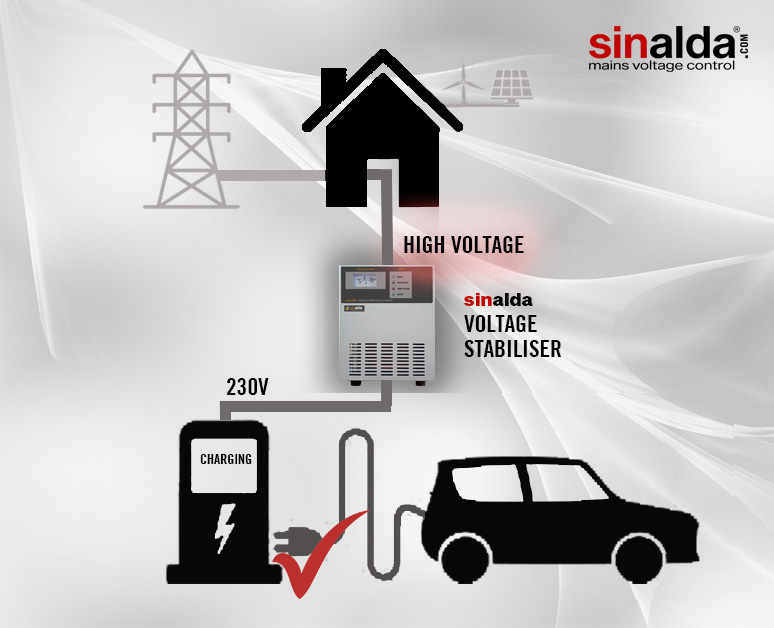
Stabilisers for EV Chargers

With many types of EV Chargers available on the market, we list below the various Voltage Stabilisers we typically supply for EV Charger applications.
Home Chargers:
Standard Home Charger
Standard 3 Pin 10 / 13 Amp Domestic Plug (2.3 to 3kW)
This type of basic charger is normally supplied with your EV.
These chargers plug directly into a standard domestic 3-pin 13 Amp outlet. But although they require minimal effort and expense, they charge a car’s battery slowly. It is usually recommended that they be reserved for emergency use only or when visiting friends or relatives overnight.
Sinalda Model: mSVR-3H (230V) – 3kVA (3kW) Single Phase Servo-Electronic AC Voltage Stabiliser. Please contact us for pricing.
Dedicated Home Chargers
Standard AC Charging Points (3.6 kW)
Charges up to three times faster than a domestic plug. Most users opt for a “Fast” AC Charging Point.
Examples of typical 3.6kW EV Chargers you will find in the market include –
- Andersen A2 – 3kW
- EVBox Elvi – 3.7kW
- Pod Point Solo 3 for Home – 3.6kW
Sinalda Model: SVS-5H-S15 (230V) – 5kVA (4kW) Single Phase Servo-Electronic AC Voltage Stabiliser. Please contact us for pricing.
Fast AC Charging Points (7 to 23kW)
Charges are ten times faster than a domestic plug. A single-Phase 7kW Charger should deliver a full charge in four to six hours.
Examples of typical 7kW EV Chargers you will find in the market include –
- Myenergi Zappi – 7kW
- Ohme Home Pro / e Pod – 7kW
- Wallbox Pulsar Plus – 7.4kW
- Easee One – 7.4kW
- Hypervolt Home 2.0 & 3.0 – 7kW
- Andersen A2 – 7kW
- Project EV EVA-07S-SE – 7.3kW
- Rolec WallPod – 7.3kW
- EO Mini Pro 2 – 7.2kW
- EVBox Elvi – 7.4kW
- Pod Point Solo 3 for Home – 7kW
Sinalda Model: SVS-10H-S15 (230V) – 10kVA (8kW) Single Phase Servo-Electronic AC Voltage Stabiliser. Please contact us for pricing.
A 22kW three-phase unit will complete the task in between one and two hours. Because most houses do not have a three-phase supply and installing one can be expensive, 22kW chargers tend to primarily reside in more commercial environments.
Examples of typical 23kW Three Phase EV Chargers you will find in the market include –
- Myenergi Zappi – 23kW
- Andersen A2 – 22kW
- EVBox Elvi – 22kW
- Pod Point Solo – 22kW
Sinalda Model: SVS-30H-3P-S15 (230V) – 30kVA (24kW) Three Phase Servo-Electronic AC Voltage Stabiliser. Please contact us for pricing.
Commercial / Industrial Dedicated Chargers:
Ultra-Fast DC Multi-User Charging Points (22 to 500kW)
Ultra-fast charging, also called high power charging or HPC, is a fast type of DC charging that can charge an electric car’s battery in less than 30 minutes. Perfect for multi-user fast charging at “on-the-go” locations.
Sinalda Models : SVS-H-3P-S15 (400V) – 30 to 500kVA Three-Phase Servo-Electronic AC Voltage Stabilisers. Please contact us for pricing.
To learn more about the comprehensive ranges of single and three-phase voltage stabilisers available from Sinalda, please check out the links below –
If you need further advice and guidance, please get in touch with us – we are here to assist.
Sinalda UK
All mains-powered equipment requires a supply which is maintained within certain limits. Too low and the equipment will malfunction; too high and the equipment could be seriously damaged. In many developed and developing economies, power demand is outstripping supply, giving rise to large voltage swings, surges and brownouts in the supply.
Whatever your national or international power supply requirements, Sinalda UK can ensure your equipment receives the power it needs to operate efficiently and without interruption. To learn more about Sinalda UK and the power protection solutions we offer please check out the links below:
Sinalda UK – The Informed Choice
Voltage Stabilizers
Power Line Conditioners

